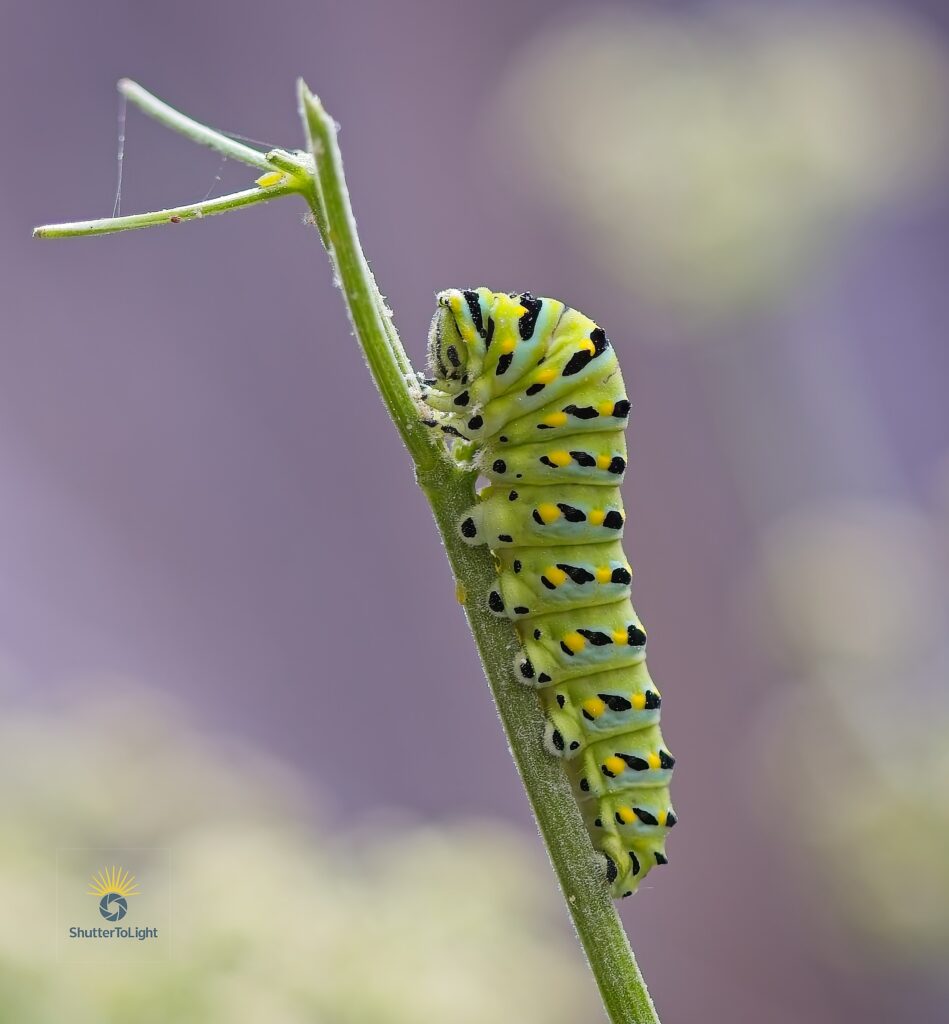来拜访的未来蝴蝶
Visitando la futura mariposa
A quiet guest in the garden, preparing for transformation.
花园里的静默访客,正准备蜕变。
Un huésped silencioso en el jardín, preparándose para transformarse.
The Moment Behind the Shot
Today I discovered a vibrant green-and-black caterpillar resting on a tall, unruly celery stalk in my backyard. At first glance, I mistook it for an ordinary worm, but a closer look revealed it as the larva of the Black Swallowtail (Papilio polyxenes). These caterpillars are known for their striking coloration—pale green with black bands and yellow spots—and their fondness for plants in the carrot family, like celery, parsley, and dill.
By letting the celery grow wild and unharvested, I unknowingly created a safe haven for this future butterfly. I’m hopeful it will stay, build its chrysalis nearby, and eventually emerge as a beautiful Black Swallowtail. For now, I’ll resist the urge to tidy up the celery patch, in the hopes of witnessing its transformation. Maybe, if I’m lucky, I’ll spot the moment it takes flight for the first time.
Do Butterflies or Caterpillars Nap?
If you are wondering whether the caterpillar in the garden is “taking a nap,” it’s helpful to know that caterpillars and butterflies do not sleep like mammals. Instead, they have periods of inactivity or rest:
- Caterpillars often remain still for extended periods, especially while digesting food or preparing to molt. This can look like “napping,” but it’s more about conserving energy and staying safe.
- Butterflies are diurnal and rest at night or during cool or cloudy weather. When resting, they may sit with their wings closed or open, remaining motionless to conserve energy and avoid predators.
- Neither caterpillars nor butterflies experience REM sleep or dreams; their rest is simply a low-activity state.
In the context of this story, the “quiet guest” is likely pausing between feeding sessions or preparing for its next developmental stage. If you see a butterfly or caterpillar sitting still, it is most likely resting, not sleeping in the human sense.
Technical Notes
- Camera: Canon R5 Mark II
- Lens: Canon EF 100mm f/2.8L Macro IS USM
- Settings: f/2.8, ISO 640, 1/200s, handheld
- Light: Soft late morning light filtered by nearby trees
- Mood: Curious, tender, quietly hopeful
What I Like / What I’d Improve
I’m glad I kept the caterpillar’s body parallel to the sensor plane—it helped ensure sharpness across the full form, even at f/2.8. Next time, I’d keep the same angle but try using a uniform background to add more visual focus and make the subject stand out.
Spotted the caterpillar on a different celery stalk today, still happily feeding. Watching it move between stalks is a quiet reminder of how small steps lead to transformation.

